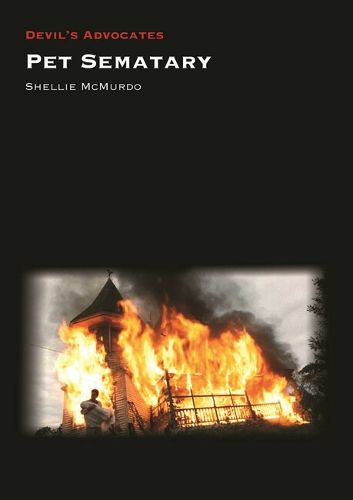Readings Newsletter
Become a Readings Member to make your shopping experience even easier.
Sign in or sign up for free!
You’re not far away from qualifying for FREE standard shipping within Australia
You’ve qualified for FREE standard shipping within Australia
The cart is loading…






Most scholarship on Mary Lambert's Pet Sematary (1989) overarchingly focuses on the Stephen King novel (1983), and tends strongly towards housing the story within the Gothic literary tradition. The film itself is often absent from considerations of North American horror cinema of the 1980s, and from wider horror scholarship in general. This Devil's Advocate stands as a corrective, and provides a holistic analysis - textual, contextual, and industrial - of the film, in order to properly situate it as an important entry into the history of horror cinema.
This book joins a growing body of works - both journalistic and academic - that aim to revisit older films in order to call attention to and/or redress the gendered imbalance in our written horror histories. McMurdo charges Pet Sematary with several contributions to the horror genre: as an important entry within the tradition of "grief horror"; as a horror film that both adheres to and defies the generic conventions of its historical context, one both engaged with and respondent to its time of creation; as a film that changed the fortunes of the cinematic Stephen King "brand" on the cusp of a new decade. Pet Sematary is the highest grossing horror film directed by a woman in cinematic history, and it stands as a story that we keep returning to - as seen by the 1992 sequel, the 2019 remake, and a forthcoming prequel. Pet Sematary's modern relevance and importance to genre history then, is manifold, and this book argues it is past time for its reconsideration as a classic of horror cinema.
$9.00 standard shipping within Australia
FREE standard shipping within Australia for orders over $100.00
Express & International shipping calculated at checkout
Most scholarship on Mary Lambert's Pet Sematary (1989) overarchingly focuses on the Stephen King novel (1983), and tends strongly towards housing the story within the Gothic literary tradition. The film itself is often absent from considerations of North American horror cinema of the 1980s, and from wider horror scholarship in general. This Devil's Advocate stands as a corrective, and provides a holistic analysis - textual, contextual, and industrial - of the film, in order to properly situate it as an important entry into the history of horror cinema.
This book joins a growing body of works - both journalistic and academic - that aim to revisit older films in order to call attention to and/or redress the gendered imbalance in our written horror histories. McMurdo charges Pet Sematary with several contributions to the horror genre: as an important entry within the tradition of "grief horror"; as a horror film that both adheres to and defies the generic conventions of its historical context, one both engaged with and respondent to its time of creation; as a film that changed the fortunes of the cinematic Stephen King "brand" on the cusp of a new decade. Pet Sematary is the highest grossing horror film directed by a woman in cinematic history, and it stands as a story that we keep returning to - as seen by the 1992 sequel, the 2019 remake, and a forthcoming prequel. Pet Sematary's modern relevance and importance to genre history then, is manifold, and this book argues it is past time for its reconsideration as a classic of horror cinema.